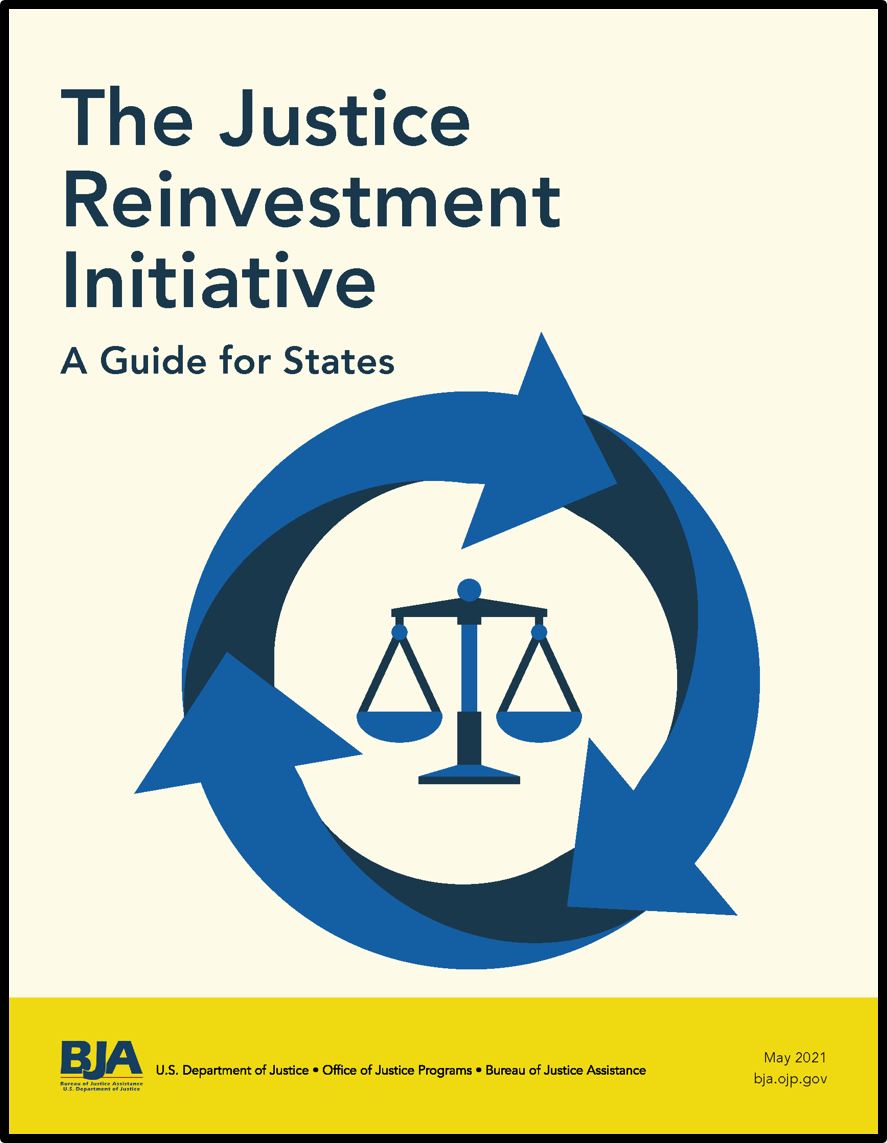
This guide explains the features of the federal Justice Reinvestment Initiative (JRI), how it is implemented in a state, and the potential benefits of each stage of a JRI implementation.
The JRI was developed and is administered by the U.S. Justice Department’s Bureau of Justice Assistance (BJA). The JRI offers a participating state the resources it needs to design and implement a data-driven, cost-effective approach for managing criminal justice populations. The 36 states that have participated in JRI have saved or averted just over $1 billion and invested half of that in strategies designed to reduce recidivism. The key feature of JRI is the provision of technical assistance for the development and guidance of an inter-branch, bipartisan, multidisciplinary workgroup of policymakers and justice system stakeholders that guide the data collection and analysis needed to assess and reform the state’s criminal justice policies to make them more cost-effective. Technical assistance resources are provided to a JRI client state by the Center for Effective Public Policy, the Crime and Justice Institute, the Council of State Governments Justice Center, and the Pew Charitable Trusts. In addition to describing the JRI procedural stages, this guide assists states in deciding whether the JRI is appropriate for them. This guide takes users through the nine-step JRI process. Steps are 1) assessment and state selection; 2) establish an interbranch, bipartisan workgroup; 3) engage stakeholders; 4) analyze data, identify drivers, and research best policies; 5) develop policy options and build consensus; 6) codify changes and invest in implementation; 7) translate system improvements into policy and practice; 8) reinvest savings; and 9) measure outcomes.
